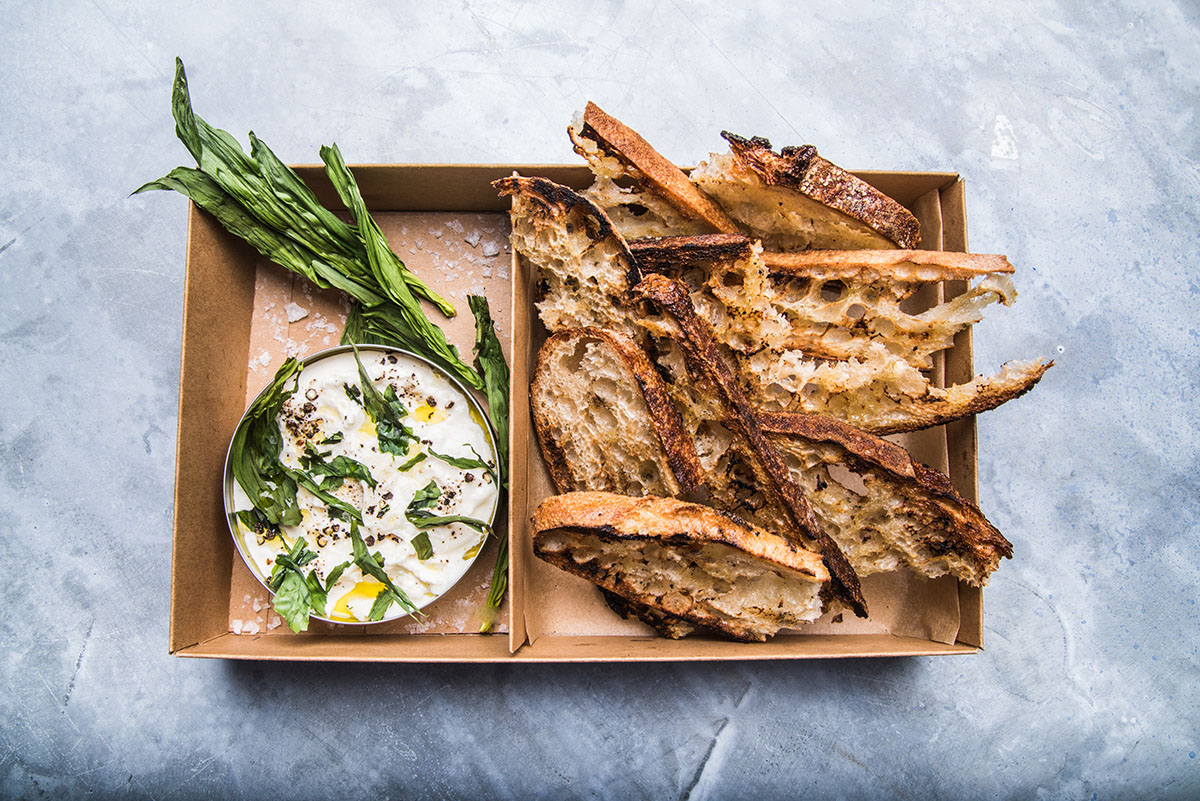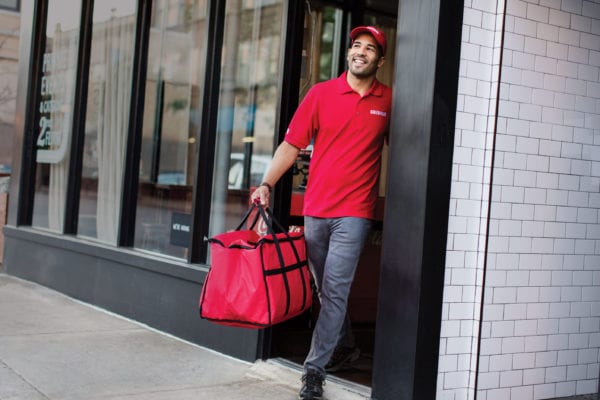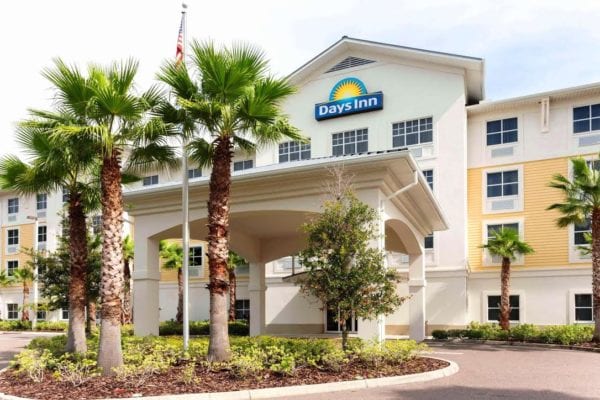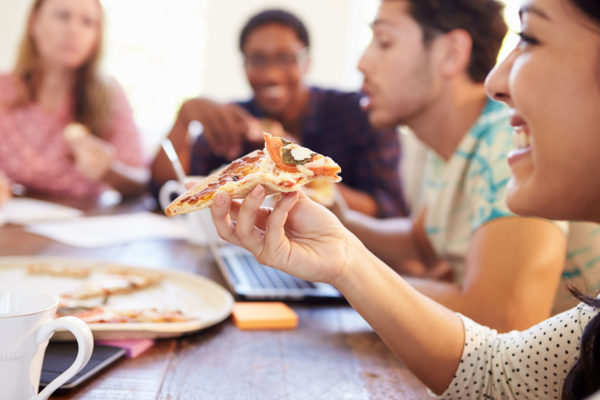Skift Take
How does the restaurant ethos transfer to a restaurant without a dining room? San Francisco chef Anthony Strong has some ideas and he plans to implement them when he opens Young Fava, a restaurant without a dining room, later this month.
— Kristen Hawley
Anthony Strong, who spent the last eleven years as a chef — most recently running the kitchens in the city’s revered Delfina Group — will rely solely on delivery services to bring his food to customers across the city when he launches with UberEats on June 16. He plans to add Caviar, Doordash, and Postmates two weeks later. The 16-item menu features salads, entrees, and desserts, and all are designed to travel.
Sometimes called ghost restaurants, the delivery-only restaurant concept has had hits and misses in the San Francisco market and beyond. Last month the New York-based, delivery-only concept Maple stopped operations after leaked documents detailed serious financial struggles. Two weeks ago Sprig, a delivery-only operation in San Francisco, shut down after reportedly losing as much as $850,000 per month. You can’t talk about delivery-only without mentioning these stories.
But Young Fava is different, according to Strong. As a well-known restaurant chef with tons of experience in San Francisco kitchens, he is convinced he understands the city’s taste and has spent plenty of time watching food leave his restaurants for delivery. He understands how people interact with delivery. And he’s obsessed with getting it right.
So, he decided to challenge himself: could he develop a delivery-only restaurant that serves some of the same needs as a local dinner spot? “My favorite restaurants are the places I can go to and pull up at the bar solo at and check my emails and scarf a burger, or go there on date night, or have a business dinner, or celebrate something with a group of friends.” He hopes Young Fava can be all of those things, on demand.
Guest Experience
Strong is bullish on applying traditional restaurant values to Young Fava. Customers are “guests,” never “users.” And although he needs to rely on delivery drivers as the faces that guests will see, he still places his faith (and business) in the hands of tried-and-true delivery companies — though he does admit he plans to trail a couple of drivers. “I want to know what the process looks like,” he says. “That’s important to me in the same way that I would spend time in the front of the house at the restaurant. I want to see how we’re engaging with guests.” Another key difference between Young Fava and the ill-fated Maple and Sprig: the latter two employed their own delivery fleets as a method of quality control. By partnering with existing services, Strong is ceding some control, but isn’t worried. “Because the delivery services are all so competitive with each other, they’ve become incredibly quick and reliable,” he says. “The customer service is great. I would never touch trying to get food from Point A to Point B.”
Still, translating traditional in-house hospitality to food that arrives in paper bags is a tall order. Strong does offer a few hints at what guests might expect. “I was inspired recently by [clothes delivery service] Everlane,” he says. “I bought a couple of shirts and the package arrived with my receipt and a packing slip and a card that said thank you. It wasn’t overly designed, but it was direct and I felt good about the interaction. That’s the kind of experience I’m going for. Even if you can’t connect with a guest in person, you can still find ways to be gracious.”
Feedback is important, too, and without a dining room and the ability to ask a guest if she’s enjoying her meal, Strong will have to rely on technology. “Even just being able to engage on Instagram is awesome. It’s a level of accessibility that never existed in restaurants before.” He’s also betting the food will speak for itself. “One or two items in each category will be changing regularly. I want people to know we’re constantly playing with things and having fun. If guests know that a chef is creative and always working on new things, that’s a way of engagement, too.”
Logistics
Opening a restaurant is no easy financial feat; startup costs are high and the only certainty is uncertainty. To start, Strong and his staff will operate out of the kitchen at Turtle Tower, a beloved San Francisco Vietnamese restaurant that ends service at 5pm. To work around that kitchen schedule, Young Fava will start with dinner service available from 6-10:30pm, Tuesday through Sunday. He’s on the hunt for a kitchen space of his own — even though the location doesn’t have to be in the prime location you’d hope to open a traditional restaurant, he does need to be centrally located in the city so he’s best positioned to send out hot food with delivery drivers.
Perhaps most challenging: the food has to travel well. “Executing this menu comes with some serious challenges,” he says. “But I love having the right constraints around a project and being able to get creative within those constraints.” Pasta, for instance, doesn’t travel well, but he felt strongly about including a comforting pasta dish. “Instead of gnocchi we’re going to be using Korean rice cakes, which are soft and pillowy like gnocchi, interact really nicely with the sauce, but they hold incredible chew and texture even after they’ve spent some time in transit,” he says, adding “And conveniently gluten free,” with a smile. (Know your Bay Area audience.)
Aside from the food, packaging is a huge part of takeout, and Strong has spent serious time considering the vessels his food will travel in. “I can’t stand 95 percent of takeout packaging,” Strong says. “I went through literally everything on the market and decided on just a couple of small, functional pieces to use.” He also had one box custom-made to his exact specifications. “There’s almost nothing special about it, which is why I was interested in making it,” he says. “It has enough space around the front and back and side edges in the bag so a guest can actually get their hands around it and take it out of the bag.”
For him, the project is more about innovation and less about saving money by ditching the dining room. “I haven’t had to put together a dining room and front of house staff, which has been a cost savings. That’s also kept my focus on nailing the project,” he says. But as every other failed and successful delivery-only restaurant has learned, those savings are short-lived. After packaging and delivery costs, operating Young Fava will cost about the same as operating a brick-and-mortar storefront, he says.
Strong understands that this new concept, like any new venture, will need to change and evolve over time, and he’s excited for the ride. “As a restaurant guy, I can pretty easily walk into most restaurants and get a good understanding of what their operations look like. The interesting thing about this project is I can’t tell exactly what the business is yet. It’s half startup, half restaurant.”
Indeed, Strong’s new venture exists in a new restaurant-industry gray area, created and enhanced by new technology. Calling Young Fava a delivery-only restaurant undersells the concept. Strong has gone to great lengths to engineer what he considers the perfect delivery service. It’s not delivery-only, it’s delivery first. Oh, and the name? It was a kitchen nickname given to Strong at Delfina after a shipment of young fava beans came in from a nearby farm. He quickly decided shucking the favas weren’t worth it, so they went into the fryer and became a popular dish at Delfina. He’s betting that same ingenuity and perhaps a little bit of luck lift this Young Fava off the ground and into heavy rotation for San Francisco diners.





